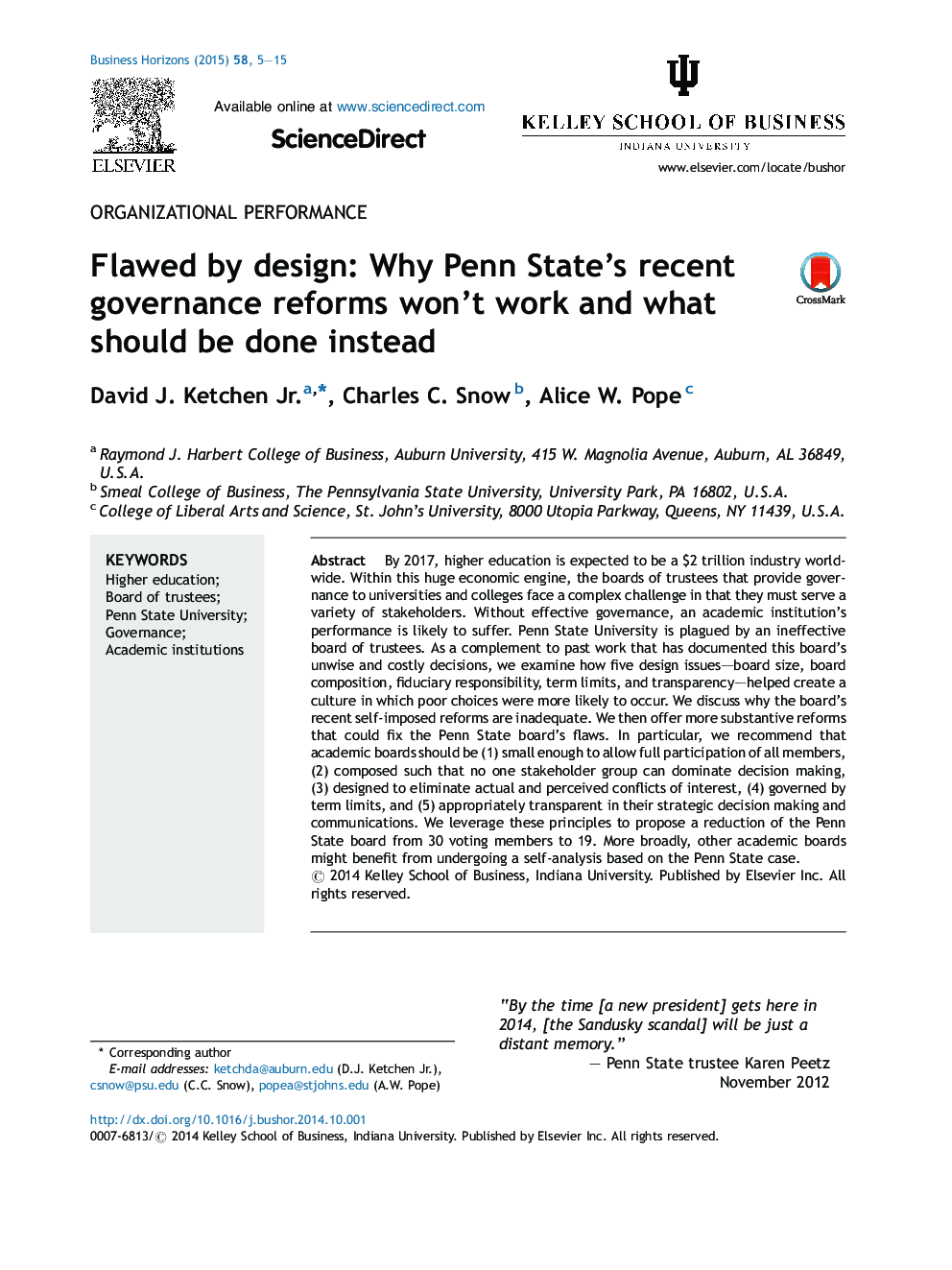| Article ID | Journal | Published Year | Pages | File Type |
|---|---|---|---|---|
| 10491110 | Business Horizons | 2015 | 11 Pages |
Abstract
By 2017, higher education is expected to be a $2 trillion industry worldwide. Within this huge economic engine, the boards of trustees that provide governance to universities and colleges face a complex challenge in that they must serve a variety of stakeholders. Without effective governance, an academic institution's performance is likely to suffer. Penn State University is plagued by an ineffective board of trustees. As a complement to past work that has documented this board's unwise and costly decisions, we examine how five design issues-board size, board composition, fiduciary responsibility, term limits, and transparency-helped create a culture in which poor choices were more likely to occur. We discuss why the board's recent self-imposed reforms are inadequate. We then offer more substantive reforms that could fix the Penn State board's flaws. In particular, we recommend that academic boards should be (1) small enough to allow full participation of all members, (2) composed such that no one stakeholder group can dominate decision making, (3) designed to eliminate actual and perceived conflicts of interest, (4) governed by term limits, and (5) appropriately transparent in their strategic decision making and communications. We leverage these principles to propose a reduction of the Penn State board from 30 voting members to 19. More broadly, other academic boards might benefit from undergoing a self-analysis based on the Penn State case.
Related Topics
Social Sciences and Humanities
Business, Management and Accounting
Business and International Management
Authors
David J. Jr., Charles C. Snow, Alice W. Pope,
